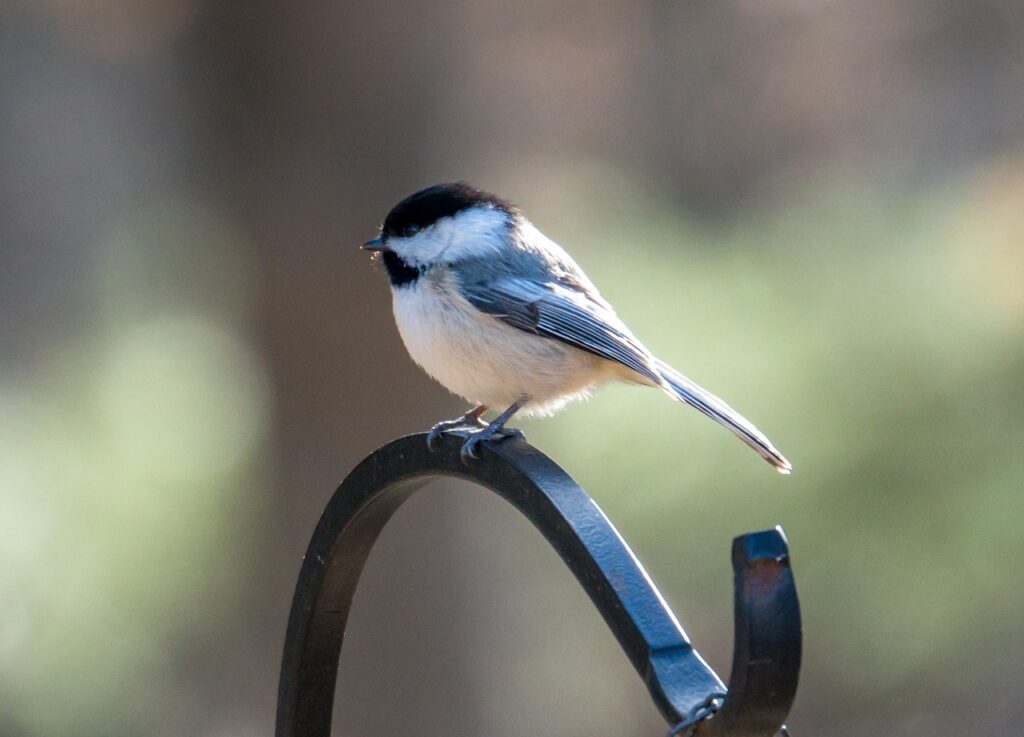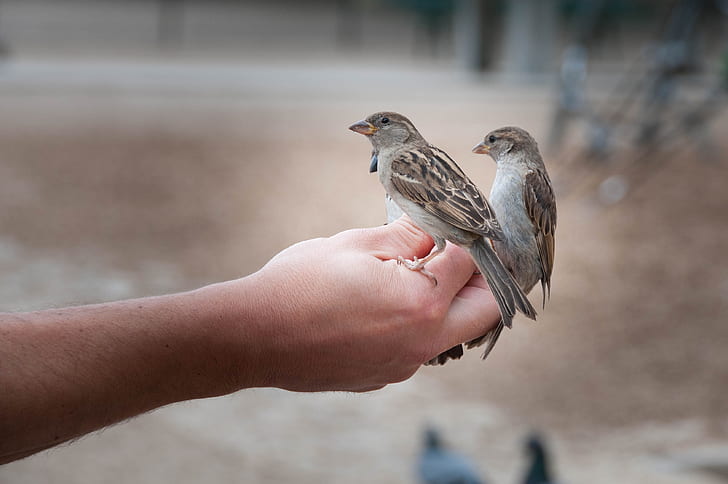We’ve all seen the videos: a goose follows a man’s boat because he saved her life. Or a crow brings shiny objects to his new human “friend.” But can wild birds and humans actually be friends? What does that look like? What is the science behind these encounters? And how can we befriend a wild bird? Let’s get into it.
Inside a Bird’s Mind and Heart
First, many wonder: Do birds have the mental capacity for a relationship? Do they have feelings? And do they even remember us? The answers may be surprising.
A bird’s brain is more akin to a monkey’s or an ape’s when it comes to their cognitive abilities. And though small, their brains can process a lot—including complex information.
In terms of feelings, birds have been observed in many behaviors that suggest they do have them. From showing affection during courtship and mating, to engaging in playful moments that serve no purpose in terms of survival, birds are more than they seem when it comes to emotions.
And as for their view of us, research is clear that they recognize humans and can even differentiate between us.
Some Amazing Bird-Human Friendships
There are many documented cases of bonds between birds and their human companions. Sometimes, it’s because the human raised them from youth, other times it’s because they saved their lives, and yet other times it’s due to a person gaining the bird’s trust over time. Check out these amazing stories of wild birds becoming friends with us.
The Man and Mister Grouse
In 2020, Bill Hartline found a grouse on his newly acquired forestland in Muncy, Pennsylvania. And the rest, as they say, is history. Mr. Hartline and “Mister Grouse,” as he named his new bird companion, have spent the last few years in each other’s regular company. Mister Grouse even rides on the tractor with him! And he’s a lover of pranks: untying Hartline’s shoelaces and tugging on his hair for attention.
A Wild Jackdaw Adopts a Human Family
Isabelle the jackdaw just appeared one day outside a family’s backyard window and has been a constant visitor ever since. Isabelle became so comfortable with her new friends that she even invited herself into their house one day. She loves exploring the kitchen, enjoys pets from Irene’s youngest daughter, which quickly became her family favorite. Though Isabelle still frequents her human family home, even inviting her jackdaw friend Urkel to join her on occasion, she remains a free bird, only stopping to visit here and there for a taste of the domesticated life.
Befriending Blue Jays and More
Julie started out by simply leaving a few peanuts for the birds on her back deck. Thus started her friendship with a Blue Jay she would call “Stormi.” Soon, Stormi was tentatively eating nuts out of Julie’s hands. The next spring, Stormi brought his Blue Jay friend, Walter, back to Julie’s deck for some grub. Soon, the bird hot spot was gaining traction, with Mountain Chickadees Lenny and Squiggy stopping by Julie’s for a feast. These bird bonds became so strong that even after Julie moved house, her avian friends followed her to her new place!
Can Birds and Humans Really Be Friends?
The answer is yes, but with a few caveats. As with any human/non-human “friendship,” there needs to be a slight redefinition of what this means. Unlike human-to-human relationships, where there is more of a power balance, humans can be friends with birds only if we keep something important in mind: our potential for knowingly or unknowingly causing harm to birds.
What do we mean by causing harm? This could be anything from encroaching on their territory to getting them too used to humans that their survival instincts are compromised. When it comes to wild birds, as with any other friendship, boundaries are key. Be their supporter by doing things that benefit them: feed them healthy foods and water, provide a place to shelter and rest, and offer a chemical-free yard.
How to Become Friends with Wild Birds

Here are some tips on how to befriend your local birds in a safe and conscientious way:
- Find out what types of foods will attract your local birds and keep your bird feeders full.
- Establish a consistent feeding schedule. Example: try refilling your feeders at the same time of day, so the birds will come to expect it, and those observing you will come to associate you as the provider of food.
- Keep pets inside to provide a safe, quiet environment for the birds.
- When birds approach the bird feeder or perch close by to you when you’re outside, move slowly and don’t approach them.
- Speak softly and liltingly to the bird, and quietly watch them without moving nearer to them.
- When a bird flies off, don’t “chase it” or go in the same direction. This behavior reminds birds of the stalking of predators that follow to eat them.
- Keep calm and your body relaxed. If you need to move in the bird’s direction, do it slowly, and speak to them softly as you do so. Always approach them from the front or side, not the back.
- Be patient and keep trying. Birds are leery of humans, so the more they see that you’re not a threat, the more they will warm to you.
Go on a Guided Bird Tour with Chirp!

Check our Bird Walks schedule and join us for our next guided bird walk in one of Big Bear Lake’s hotspots.


